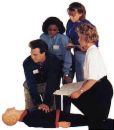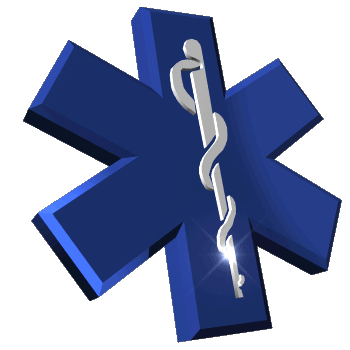
cpr@cprcpr.net
cpr@cprcpr.net




Frequently Asked
Questions on CPR
CPR Video
Is online CPR legal?
Is there a minimum age to get a CPR and First Aid certification in California?
Statistics on Car Accidents
in California
Workplace Accidents Statistics
Downward Trend in California Workplace Injuries and Accidents
OSHA Compliance for First Aid in the Workplace
Hands-Only CPR Does
Save Lives
Scene Safety
California
Training
1-888-722-7233
Cal Safety is a
Certified AED
Distributor
Certified AED
Distributor
FAQ
Cal Safety Training Center
California CPR Training,California CPR First Aid classes,California CPR class,California CPR certification,California First Aid.California CPR,California AED
Our EMT Instuctors have been teaching California CPR and First-Aid classes since 1989



Welcome to the Cal Safety CPR and First Aid Training website.We have been teaching California safety classes for over 20 years and we are all ways updating our material to keep up with all changes in basic emergency care.Our CPR and First Aid classes are taught by experienced Emergency Professionals in a fun and relaxed atmothphere.




Contact Us
888-722-7233
888-722-7233
Frequently Asked Questions on CPR
What is CPR?
A. Cardiac pulmonary resuscitation (CPR) is the term used to describe the combination of chest compressions and rescue breathes used when someone has a cardiac arrest. Studies show that CPR can and does save lives but sadly there are insufficient numbers of people becoming CPR certified.
Who regulates CPR?
A. Nobody actually regulates CPR. It is a first aid skill everyone should know and is best thought via instructor led classes. The American Heart Association issues guidelines on how CPR should be performed to get the best results.
How often do the CPR guidelines change?
A. The CPR guidelines are reviewed periodically but rarely are there any major changes. The exception to this happened in October 2010 when the American Heart Association issued a major change in CPR guidelines. Previous to this announcement, the basic methodology for applying CPR was as simple as;
A – Airway to be opened
B – Breathing in the form of rescue breathes
C – Compressions
This has been changed to;
C – Chest compressions should be started first and as soon as possible
A – Opening an airway is still recommended for those who have passed their CPR classes but only after chest compressions have already been started
B – Breathing – rescue breathes
Does the change from ABC to CAB CPR apply to everyone?
A. No the sequence for newborn CPR remains ABC with the ratio of 3:1 compressions to breathes as the cardiac arrest is most likely to have been caused by respiratory problems.
Why did the AHA guidelines change so significantly?
A. Roughly 92% of all those who suffer a sudden cardiac arrest will die before reaching hospital according to the AHA. One of the reasons why this figure is so high is the lack of individuals who have completed their CPR training. Most victims of cardiac arrest will receive no help from bystanders possibly because the people watching simply don’t know what to do. Opening someone’s airway can be daunting especially if there is a fear of infection or of seeing vomit or other bodily fluids. The change to starting with chest compressions attempts to remove these barriers in the hope that people will be more inclined to offer assistance.
Studies show that CPR does save lives and chest compression only CPR can be very effective. In 2005, the AHA recommended that untrained bystanders begin with chest compression only CPR. But now the recommendations encompass those trained and untrained. AED devices work best when the heart is full of blood and this can be achieved by performing chest compressions properly.
What are the main characteristics of high quality chest compressions?
* Begin as soon as possible i.e. don’t delay to open airways etc.
* You must push hard and fast – chest should be depressed at least two inches and at a rate of at least 100/min.
* Minimal interruptions – keep it up until the emergency services arrive.
Why is continuous chest compression CPR often just as effective as traditional CPR?
A. In addition to the fact that most would be rescuers fail to deliver rescue breathes correctly, the fact is that the majority of cardiac arrest victims benefit most the earlier chest compressions and defibrillation is applied. An automated external defibrillator works best when the heart is full of blood and it is possible to achieve this using continuous chest compression CPR. It was thought that if someone had a cardiac arrest, giving them rescue breathes would increase the oxygen supply. Now medical science has confirmed that there will be some oxygen in the blood and lungs so getting the blood pumping to the heart and brain is more important to survival.
Even well trained rescuers will take 30 seconds or more to open airways before beginning chest compressions and that can make a difference between life and death. It is imperative that interruptions are kept to a minimum as well.
Why not do away with rescue breathing completely?
A. Some people have wondered why the CPR guidelines 2010 didn’t do away with the requirement for rescue breaths completely. The reason is very simple. In children and babies the most common cause of cardiac arrest is a breathing problem i.e. the cardiac arrest tends to follow hypoxia and not the other way around. So rescue breathes are vital or the child will become starved of oxygen very quickly.
In adults, while the majority of cardiac arrests victims will benefit most from chest compression only CPR, there are some notable exceptions including cardiac arrest caused by drug overdose, drowning or some other form of trauma.
It is vital that those who attend CPR classes are taught the right way to provide rescue breathes and that all those who attain their CPR Certification are trained to provide CAB CPR i.e. chest compressions, airway and breathing.
If I learned the old CPR do I need to stop administering CPR until I become certified in the new CAB way?
A. No the AHA is very clear on this issue. Giving effective CPR saves lives and so you should continue to provide CPR using the A, B, C sequence just as you were trained until you decide to take cpr recertification.
If I have recently passed my CPR certification, do I have to recertify in accordance with the new AHA guidelines?
A. No your CPR certification is valid for two years so there is no requirement to recertify until the time comes to be retrained. However, your employer may have a different view. If you have to be CPR trained for your job, you should check with your human resources department. You should continue to perform CPR the way you were trained.
Can I kill someone by giving CPR the wrong way?
A. People often worry that they could kill someone by doing CPR incorrectly. What you need to remember is that someone who has had a cardiac arrest is nearly always clinically dead already. If they are not dead, they will be in a couple of minutes. Therefore you cannot make the situation worse by starting CPR. You may not save their life but you just might. But you can be 100% sure that if you don’t start CPR they will die unless someone else goes to their assistance.
How often does CPR save someone’s life?
A. Unfortunately statistics show that CPR often doesn’t save the person from dying but that shouldn’t discourage anyone from gaining their CPR certification. What is important are the people who are saved because a bystander had taken the time to attend CPR training and was therefore properly qualified to assist when they needed help the most. If you want to see how people feel who survive having been given CPR just ask Brian Fouche, a competitive 28 year old cyclist whose life was saved when a fellow cyclist performed CPR when Brian collapsed with a sudden cardiac arrest during a cycling event. Brian had no history of heart problems but has since had an internal defibrillator fitted.
What are the Good Samaritan Laws and will they protect me from being sued?
A. The term “Good Samaritan Laws” are used to describe those laws or acts designed to protect those who try to assist someone else when they are ill or injured. They are usually introduced as a means of helping prevent witnesses to an accident or illness from hesitating to help. But they do not mean that you will never be sued or prosecuted if you were to aid a victim. It depends on which state the accident occurs. In some states you have more protection if you have attained your CPR certification. In some states you can be legally responsible if you don’t give reasonable aid to a victim. This could be as simple as ringing 911 but can be interpreted to mean that you didn’t start CPR when it may have been useful.
So as you can theoretically be sued either way, and there have been few cases of someone being sued for administering CPR, what have you got to lose by learning the CPR steps? Imagine how you would feel if you came across a victim of a cardiac arrest and didn’t know how to help? Now imagine that person was your Mom, Dad or other family member?
Can CPR be used on animals?
A. There have been instances of people successfully saving the lives of their pets using CPR.
Ok I am convinced! Where should I take my CPR classes?
A. CPR classes are available in numerous locations from your local hospital or health center.If you live in Northern or Central California you can give us a call right here at
Cal Safety 1-722-888-SAFE
2011-Cal Safety,California CPR Classes - All Rights Reserve - E-mail staff@Calsafety.com





